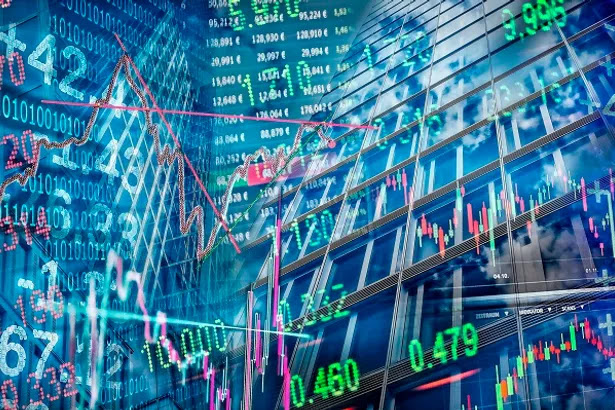The 8 Best ETFs of 2019
Exchange traded funds, or ETFs, are a popular option for investors looking to grow their money with both short and long-term time horizons. ETFs allow you to buy and sell funds like a stock on a popular stock exchange. This is different from traditional mutual funds, which only allow you to trade at the end of a business day. The ETF combination of instant diversification and quick liquidity is a good reason to consider them as a first investment or part of a veteran portfolio.
ETFs trade nearly instantly when you enter a trade online with your favorite brokerage. Many ETFs track major indices like the S&P 500 or the Dow Jones Industrial Average, but ETFs can focus on virtually anything a traditional mutual fund can. Follow along to learn more about how ETFs work and the best ETFs to consider when building your portfolio.
Like all investments, ETFs come with risks. Typically, riskier investments lead to higher returns, and ETFs tend to follow that pattern. Diverse, broad market funds and funds focused in bonds tend to offer the lowest risk. Commodity, option, and narrower funds usually bring you more risk and volatility.
Your investment decisions should align with your financial goals. Be aware of your own risk tolerance, if you can afford to lose some or all of your investment, and how your investment choices fit in with your overall financial plan.
Be sure to consider the underlying assets — when you buy an ETF, you are not buying shares of a company’s stock or bonds directly. Instead, you are putting money into a fund that buys a basket of stocks and bonds on your behalf. Make sure the fund you buy invests in assets you would choose yourself.
Also, take risk and volatility into account. Some investors are fine with taking on risky assets betting that they will pay off with big returns. Other investors prefer to avoid big ups and downs and are more concerned with preserving capital and a steady income. Choose an ETF that aligns with your risk and volatility tolerance.
And finally, keep an eye on the fees. In August 2018, Fidelity released two new ETFs that are 100% fee-free. These cutting-edge ETFs are a very new concept. Prior to that, competitive ETFs from companies like Vanguard, Fidelity, and Schwab led the competition with low fees sometimes under 0.1%. The most expensive ETF, according to Bloomberg, charges 9.2%. Compare multiple ETFs for fees and other features before you buy.
We should emphasize again that it is never a good idea to buy an investment if you don’t understand the risks. If you have any serious concerns, consult with a financial advisor or other expert before entering your ETF trade order. Read on to learn about the best ETFs you can buy today.
01 Best Overall: Vanguard S&P 500 ETF (VOO)
Vanguard
Courtesy of Vanguard
The best overall ETF comes from the largest mutual fund company: Vanguard. This ETF tracks the S&P 500 and charges an expense ratio of just 0.04%. Warren Buffet himself has even recommended the Vanguard’s S&P 500 index fund by name.
Buying into this fund gives you exposure to 500 of the biggest public companies in the United States. That offers you lots of diversity with some degree of a safety net as all investments are focused in the US.
Historically the S&P 500, which in some ways is a proxy for the overall United States economy, returns about 10% per year over a long horizon. While past performance is not a guarantee of future performance and the market can go down at any time, if you have a long-term horizon this index fund is a great choice.
02 Best No-Fee: Fidelity ZERO Total Market Index Fund (FZROX)
Fidelity
Courtesy of Fidelity
While this ETF does not have a long history, the large-blend fund charges no fees and no minimum. If you want to invest in an ETF for free, this is one of only two options as of this writing. That is a very exciting development for individual investors.
There is no minimum to invest to get started which, like all ETFs, makes it an enticing option for both retirement accounts and brand new investors alike. The index focuses on the total return of the United States stock market, making it even more diverse than an S&P 500 fund.
The best proxy for comparison of past performance is the Fidelity Total Market Index Fund (FSTMX). This fund offers near identical performance to the Dow Jones US Total Stock Market index and over the last ten years moderately outperformed the large-blend category.
03 Best for Active Traders: SPDF S&P 500 ETF (SPY)
State Street
Courtesy of State Street
Yes, the S&P 500 is so important it grabbed two of the top three spots on this list! While the VOO ETF from Vanguard is an ideal investment for long-term ETF investors, SPY (sometimes called the “spy” or “spies) from State Street Global Advisors is one of the most heavily-traded ETFs on the market.
Because this index tracks the S&P 500 in real time, active investors use this fund to buy and sell the US stock market in a single trade. SPY launched in 1993 as the first exchange-traded fund.
Active traders prefer SPY due to its extremely high liquidity. It charges a 0.0945% expense ratio, which is higher than Vanguard’s competing ETF. But due to its popularity and trade frequency, many investors are happy to put their cash into SPY.
04 Best for Small-Cap Stocks: iShares Russell 2000 ETF (IWM)
iShares
Courtesy of BlackRock
The Russell 2000 is an index that tracks 2,000 small-cap stocks. It is made up of the 2,000 smallest 2,000 of the Russell 3000 index measured by market capitalization. This index is another great way to track the US stock market as a whole, but with a focus on the smaller companies in the public markets instead of the biggest.
IWM charges a 0.19% expense ratio, which is lower than many mutual funds but a long way from the bottom of the ETF industry. But compared to an S&P 500 fund, managers of the iShares Russell 2000 ETF have four times as many stocks to buy and sell to keep the index fund in-line with the index.
Some investors argue that smaller stocks have more room to grow than bigger stocks, while contrarians would argue that smaller stocks are riskier and more volatile. But if you want to buy a big swath of US companies with one click, IWM is a popular way to do it.
05 Best for US Dividends: Schwab U.S. Dividend Equity ETF (SCHD)
Charles Schwab
Courtesy of Charles Schwab
Charles Schwab offers another major family of low-cost ETFs. It’s U.S. Dividend Equity ETF is an excellent choice for investors looking to turn their portfolio into a cash flow. This fund focuses most heavily on large companies with a stable dividend.
Retirees looking to earn income from a portfolio without selling often use dividend stocks as a focus investment. This ETF is passively managed to track the Dow Jones U.S. Dividend 100 index, made up of 100 top dividend stocks. It charges a very competitive 0.07% expense ratio.
06 Best for Gold: SPDR Gold Trust (GLD)
SPDR
Courtesy of SPDR
If you want to invest in gold without going into a store and buying bars of the precious metal, your best option is the GLD ETF. GLD is a proxy for the price of gold bullion. It charges a 0.40% expense ratio.
Gold is often used as a hedge against declines in the stock market. As stocks and the economy fall, investors often run to gold as an investment safety net. That means gold often trades inversely to the popular index funds mentioned above — keep that in mind if you decide to turn some of your dollars into GLD.
07 Best for NASDAQ Large-Cap Stocks: Invesco PowerShares QQQ (QQQ)
Invesco
Courtesy of Invesco
Ticker symbol QQQ gives you an ETF that tracks that NASDAQ 100 Index. The NASDAQ 100 is made up of the 100 largest stocks on the NASDAQ stock exchange, traditionally a home for many technology companies.
Where the S&P 500 tracks large-cap stocks across both major US stock exchanges, this index is limited to just the NASDAQ, so you can expect your investment to be more heavily influenced by big news in the technology sector more than other industries. This ETF charges a 0.20% expense ratio.
08 Best International: Vanguard FTSE Developed Markets (VEA)
Vanguard
Courtesy of Vanguard
If you are looking to add international exposure to your portfolio, large companies in developed countries tend to offer the best balance of risk and return. Developing market funds are tempting, but beware that they are much riskier than investments in developed markets.
VEA follows the FTSE Developed All Cap ex US Index. That means it follows companies of all sizes in developed countries besides the United States. This investment puts stocks in Canada, Europe, and developed Pacific nations in your portfolio with ease. The fund charges a low 0.07% expense ratio.
اكتشاف المزيد من موقع استشارات - مال واقتصاد وتقنية واجتماعيات
اشترك للحصول على أحدث التدوينات المرسلة إلى بريدك الإلكتروني.






